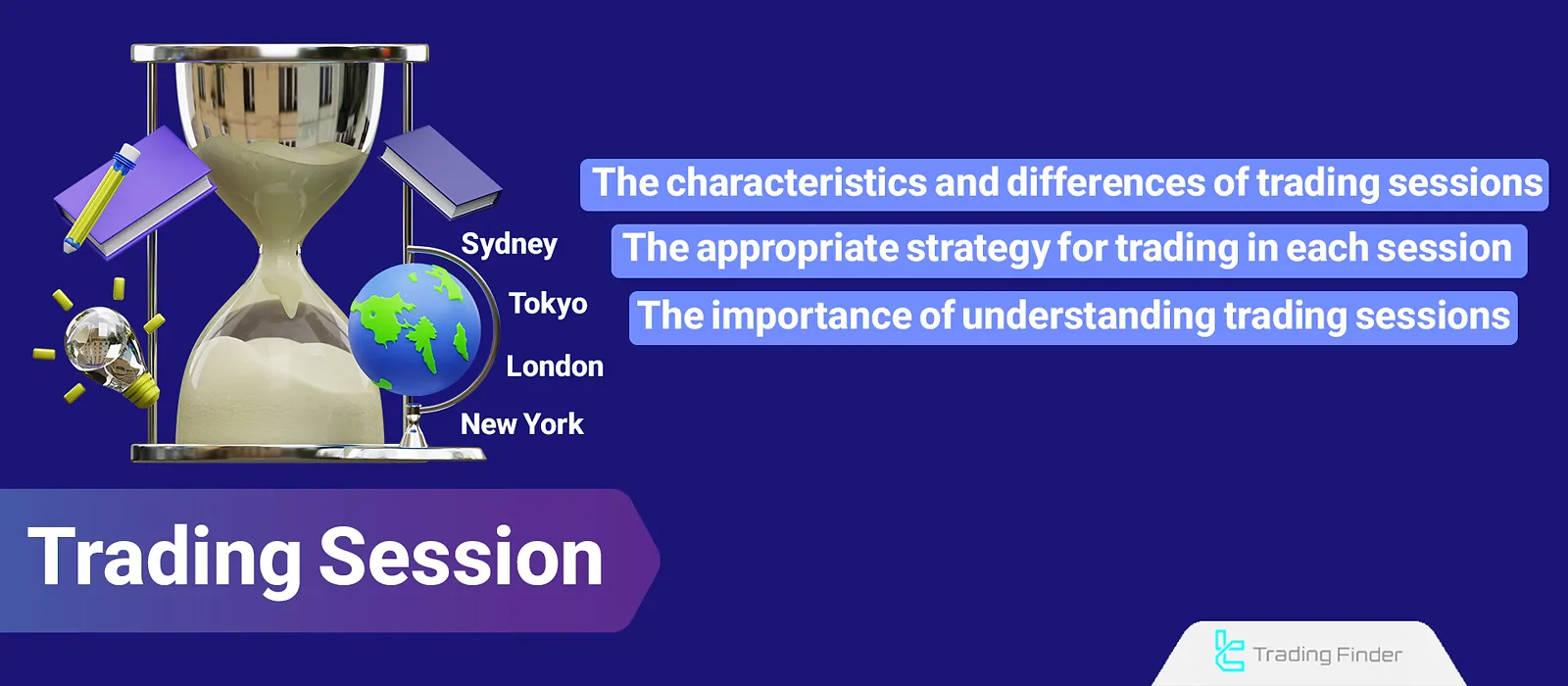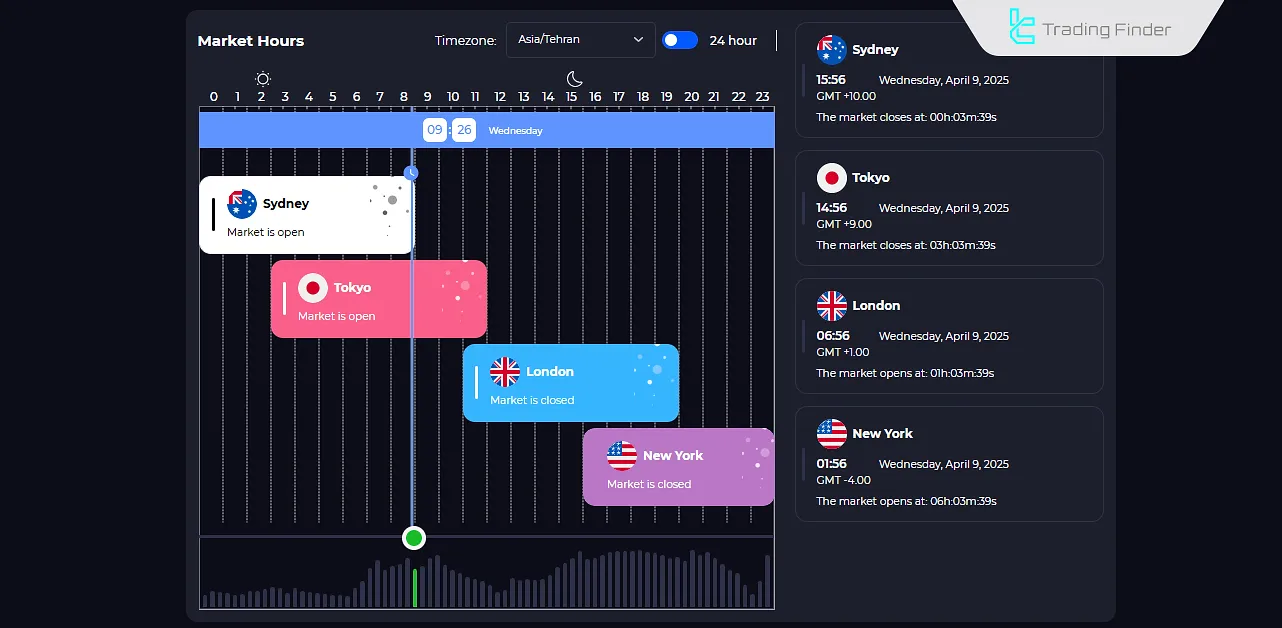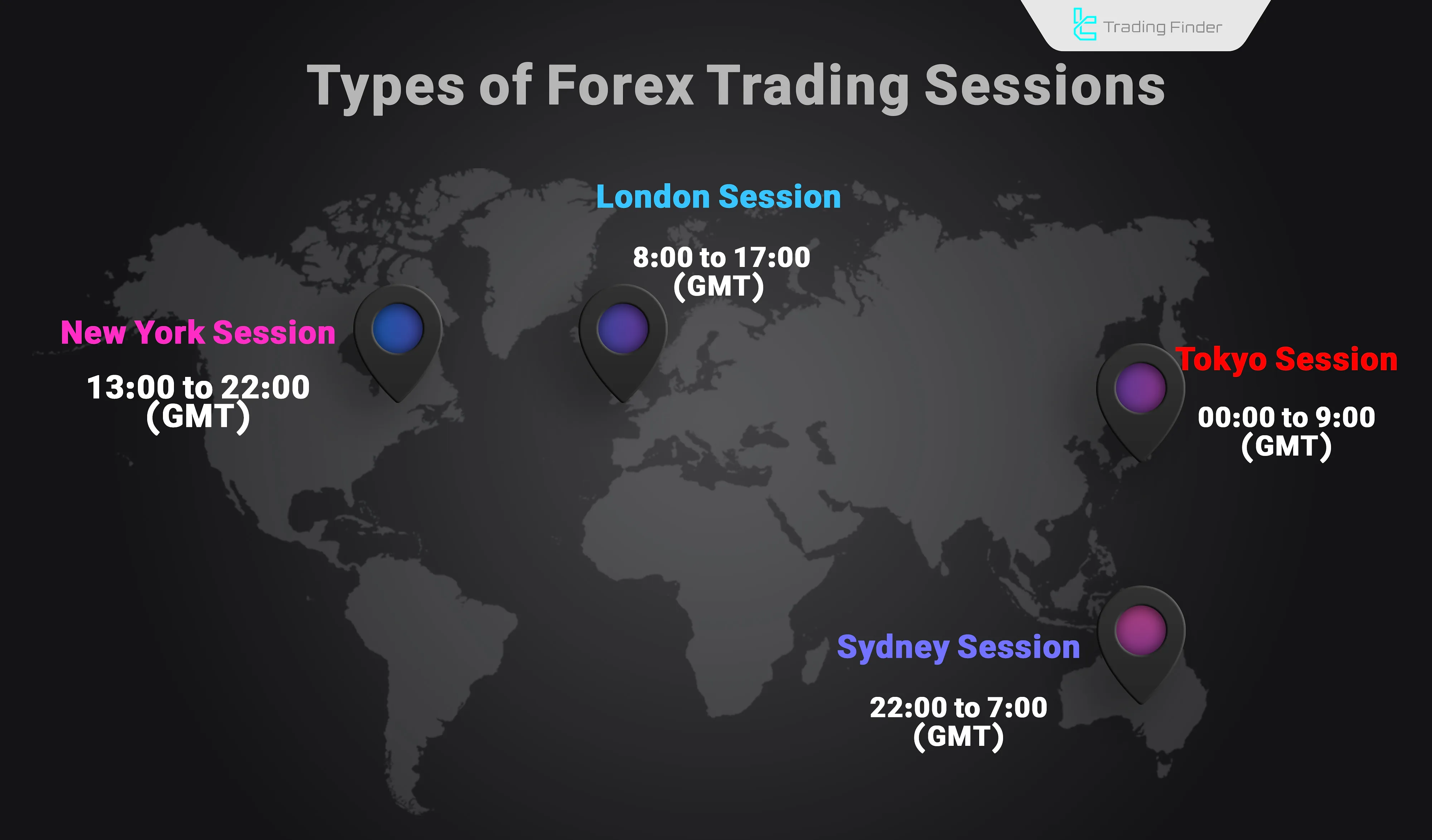The operational hours of financial markets are broadly categorized into four sessions of Sydney, Tokyo, London, and New York.

This division is based on the working hours of major financial hubs in Asia, Europe, and America, with each session differing in characteristics such as trading volume, price volatility, and trading opportunities.
What is a Trading Session?
Trading sessions are specific time periods during a trading day when traders from different time zones engage in Forex market activities.
For example, during the Tokyo session, Japanese and Asian financial institutions are active. As a result, volatility and trading volume in JPY currency pairs increase.

This image showcases the Forex Market Sessions Tool on the TradingFinder website. Traders can use this tool to monitor sessions and their current status (open/closed).

Types of Forex Trading Sessions
Forex trading sessions are divided into four categories:
- Sydney Session: The first trading session with the lowest volatility among all sessions. The AUD (Australian dollar) is the most watched currency;
- Tokyo Session: Marks the opening of Japanese markets, increasing trading volume in Asian markets, especially the JPY;
- London Session: The London session, overlaps with Asia and the US, sees the highest Forex trading volume, accounting for over 30% of all transactions;
- New York Session: The London-New York overlap offers peak liquidity and tight spreads, ideal for scalping.
Note: U.S. economic reports are released during the New York session. These reports cause short-term volatility in major USD pairs and influence market sentiment (risk-on/risk-off).
Why is Understanding Trading Sessions Important?
Trading sessions directly impact trading volume, volatility, and strategies (some work only in specific sessions). Understanding these sessions is crucial, especially for short-term traders.
Key Benefits of Knowing Trading Sessions:
- Optimal Trading Times: The London and New York sessions offer high liquidity, making them ideal for scalpers;
- Economic Data Releases: Economic indicators such as inflation rate, NF Ts, and interest rates are published during the London/New York sessions, enabling news trading or risk avoidance;
- Trader Psychology: Asian sessions are cautious, while London/New York sessions are high-risk/high-reward.
Differences Between Trading Sessions
Forex sessions vary in trading volume, price volatility, active strategies, and key currency pairs.
Parameter | Sydney | Tokyo | London | New York |
Hours (GMT) | 22:00-06:00 | 00:00 | 08:00-16:00 | 13:00-21:00 |
Characteristics | Low volatility Start of day | Asian market peak Focus on JPY | Highest liquidity | High volatility U.S. reports |
Key Pairs | AUD/USD, NZD/USD | USD/JPY, AUD/USD | GBP/USD, EUR/USD | GBP/USD, EUR/USD |
Volatility | Low | Medium | High | High |
Trading Style | Swing Trading | Range Trading | Scalping/Day | Scalping/Day |
Technical Patterns in Forex Sessions
Certain technical patterns emerge in high-volatility sessions like London and New York due to high trading volume and reactions to economic news. These patterns help identify reversals, fakeouts, and liquidity grabs.
New York Reversal Pattern
A popular pattern, the New York Reversal, often forms in the latter half of the New York session, signaling trend reversals after strong initial moves.
Seek & Destroy Pattern
Another pattern, Seek & Destroy, appears in London/New York sessions. It involves liquidity sweeps and fake breakouts to trap retail traders.
Conclusion
Forex sessions (Oceania, Asia, Europe and America) are defined by overlaps, trading volume, liquidity, and key currency pairs.
Patterns like the New York Reversal and Seek & Destroy can identify short-term trends in London/New York sessions.





